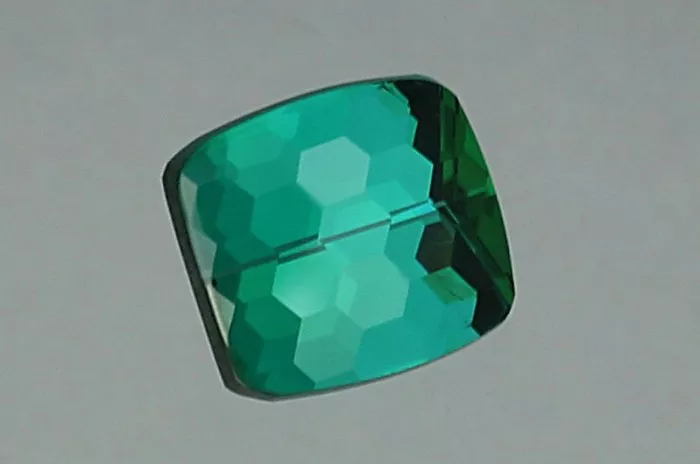Green tourmaline, also known as verdelite, is a captivating gemstone cherished for its vibrant green hues and remarkable properties. Its value is influenced by various factors including color, clarity, cut, and carat weight. In this article, we will explore the aspects that determine the value of green tourmaline, making it a sought-after gem in the market.
Understanding Green Tourmaline
Origins and Formation
Green tourmaline belongs to the tourmaline family, a group of minerals that form in a variety of colors. This gemstone forms in granite, pegmatites, and metamorphic rocks, where its unique color is influenced by trace elements such as chromium and vanadium. These elements are responsible for the rich green tones that make green tourmaline so desirable.
Chemical Composition
Tourmaline’s chemical composition is complex, generally represented by the formula (Na,Ca)(Li,Mg,Fe,Al)3Al6(BO3)3Si6O18(OH,F)4. The presence of elements like iron, magnesium, and lithium contribute to its diverse color spectrum, with green tourmaline specifically being colored by chromium or vanadium.
Factors Determining Value
Color
The most critical factor in determining the value of green tourmaline is its color. The ideal green tourmaline exhibits a pure, intense green hue without any secondary colors. The value increases with the intensity and saturation of the green color. Stones with a medium to dark tone are often more valuable than those with lighter or overly dark tones.
Clarity
Clarity refers to the presence of inclusions or internal flaws within the gemstone. Green tourmaline typically has fewer inclusions compared to other gemstones. Stones with high clarity, meaning fewer visible inclusions, are considered more valuable. However, minor inclusions can sometimes enhance the gem’s character and are acceptable in the market.
Cut
The cut of green tourmaline significantly impacts its value. A well-executed cut maximizes the gemstone’s brilliance and color display. Common cuts for green tourmaline include emerald cuts, oval cuts, and cushion cuts. Precision in cutting enhances the gem’s visual appeal and overall value.
Carat Weight
Like most gemstones, the value of green tourmaline increases with carat weight. Larger stones are rarer and thus more valuable. However, the increase in value with carat weight is not linear; a larger stone with poor color or clarity can be less valuable than a smaller, high-quality stone.
Evaluating Green Tourmaline in the Market
Market Trends
The demand for green tourmaline fluctuates based on market trends and consumer preferences. Currently, there is a growing interest in colored gemstones, and green tourmaline is benefiting from this trend. Its affordability compared to other green gemstones like emerald makes it an attractive alternative for consumers.
Comparative Value
When comparing green tourmaline to other gemstones, it stands out for its affordability and availability. While not as expensive as emeralds, high-quality green tourmaline can still fetch significant prices, particularly when exhibiting exceptional color and clarity.
Synthetic and Treated Stones
It’s essential to differentiate between natural, synthetic, and treated green tourmaline. Natural stones are more valuable, while synthetic stones, although visually similar, lack the same value. Treatments such as heat or irradiation can enhance color but may impact the gem’s value. Disclosures about treatments are crucial for transparent transactions.
See Also: Is Pink Tourmaline Valuable?
Investment Potential
Rarity and Availability
While not as rare as some other gemstones, high-quality green tourmaline is not abundantly available, contributing to its value. Its unique color and properties make it a desirable addition to any gemstone collection.
Long-term Value
Green tourmaline’s value has shown a steady increase over the years, making it a viable option for long-term investment. Collectors and investors are increasingly recognizing its potential, especially as other gemstones become less accessible.
Care and Maintenance
Durability
Green tourmaline has a hardness of 7 to 7.5 on the Mohs scale, making it a relatively durable gemstone. However, it requires proper care to maintain its luster and avoid damage.
Cleaning and Storage
To clean green tourmaline, use lukewarm soapy water and a soft brush. Avoid harsh chemicals and ultrasonic cleaners, as they can damage the stone. Store green tourmaline separately from other gemstones to prevent scratching.
Conclusion
Green tourmaline’s vibrant hues, historical significance, and affordability make it a valuable gemstone in today’s market. Its value is determined by factors such as color, clarity, cut, and carat weight. Understanding these aspects can help consumers and collectors make informed decisions when purchasing green tourmaline.
Whether as a piece of jewelry or an investment, green tourmaline offers a blend of beauty, rarity, and cultural richness. Its steady increase in value and the growing interest in colored gemstones position green tourmaline as a gemstone worth considering for anyone looking to add a touch of green elegance to their collection.


